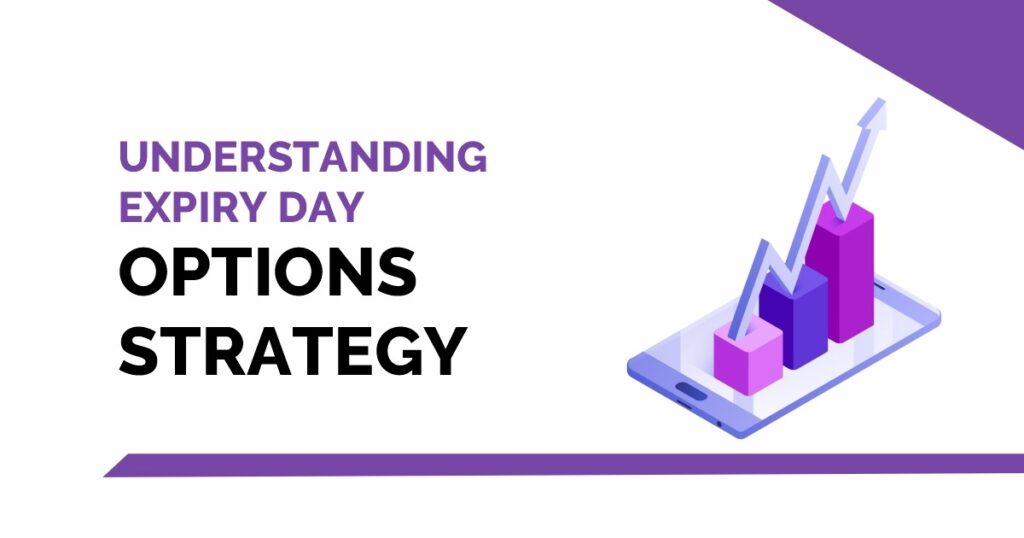Stock Market Expiry Days
In the securities exchange, expiry days allude to the particular dates when subordinate agreements, like choices and prospects, arrive at their lapse. Nowadays, the agreements should either be worked out, shut, or permitted to be terminated uselessly. The subtleties can change because of the kind of subordinate and the market in which it is exchanged. All strategies about expiry days were learned from the correction territory brand.
Expiry Day Option Trading:
In the normal chat, you can see we get to see a movement of 70-100%. A particular day chart, in which we see percentage-wise. So here we get to see a big movement compared to a normal day. Which sometimes happens 4-5 times or more than that. And even on this particular day, the option of Rs. 10 sometimes reaches Rs. 100 or Rs. 200. Which means your money is 10-20 times more than that. So, if you know a little bit about futures or options, then you must have heard about expiry day. And this is the particular day when we get to see such big movements in options. That’s why you must hear about the expiry date.
Zero to Hero trend:
It is another trend in the market Zero to Hero which means either your money will be 0 or 3-4 times. How does all this happen?
The strategy of option trading on expiry day
- Proper timing
- Proper premium
- Proper strike price
Expiry:
The expiry date is the last date working Thursday of the month when the contract expires. The contract square on a particular date that date is expiry. In case of holiday, expiry is pre-ponded to a day prior.
Basics expiry:
We will understand all the basics about expiry. Which you should know before taking a trade on this day. The biggest difference between a normal day and an expiry day is the value of an option contract. Where on a normal day, you will get an option contract for Rs. 300-600. But on an expiry day, you will get it for Rs. 50-80.
Why does this happen?
A goal you want to achieve but the less time you have, the less probability you have of achieving that goal. So, this time value is also included in an option contract.
Option contract:
If we analyze the price of an option contract then basically it made up of two things:
- Intrinsic value
- Time value
Intrinsic value is the difference between spot price and the asset price of any contract.
Example:
Suppose we have an option contract of Bank Nifty whose spot price is Rs. 46,000. At the same time, the current value of Bank Nifty is Rs. 46,200. In this case, the intrinsic value of that contract will Rs. 200. The intrinsic value is calculated in this way. In this intrinsic value, the time value of a contract is also added.
Types of options:
- Monthly option
- Weekly option
Most traders trade in weekly option. The Bank Nifty, then it also expires on the Thursday of every week. Then nifty expires on the last Thursday of the month. But in September 2023, it has been shifted to Wednesday.
Some interesting facts about trading:
- 61% of people as of now trade in index option
- 39% of people trade in stock options
- If we talk about 5%of people then only 5% of people trade in index futures
- And 5% of people trade in stock futures
So, we see a clear disparity that how the majority of the public is interested in the index option. So, everyone has to play the hero zero formula.
Some strategies for active traders:
-
Gama Blast:
They pay attention specifically if they are coming to trade. For all active traders, there is a thing called Gama Pahalwan, Gama Blast, you have to be careful with it. Gama blast happens when you see the options on the day of expiry. Suddenly the option of 10 rupees becomes 70, it happens because it is out of money. There is no time value left in it. But as soon as a one-sided move comes, it becomes like in the money, its premium skyrocket. The benefit of this is only of the option buyer but option buyers are not able to capture it in large quantity.
-
Volatility
It has been distributed a lot. If there is an expiry every day then the concentration of volatility has been removed and distribution has been done there. Along with the efficiency of expiry traders, the strategy of expiry trading has been reduced by a lot of people. The simple reason for this is that somewhere or the other the whole market’s dynamics have been removed. They will have to re-evaluate their existing strategies
Choices Expiry Dates
Month-to-month Choices: These choices ordinarily terminate on the third Friday of every month.
Week after week Choices: These lapse each Friday of the week.
Quarterly Choices: These choices terminate on the last exchanging day of the quarter (Walk, June, September, December).

Prospects Expiry Dates
Stock Record Fates: Frequently lapse on the third Friday of the agreement month.
Item Prospects: The expiry dates can change contingent upon the particular product, yet they by and large fall inside the agreement month.
Record Choices and Fates
Many record choices and fates likewise lapse on the third Friday of the agreement month. This is known as “Triple Witching” when investment opportunities, stock file prospects, and stock record choices all terminate around the same time. It happens four times each year Walk, June, September, and December.
European Business sectors
In European business sectors, the lapse dates for choices and prospects are many times on the third Friday of the month, like in the U.S. market. Notwithstanding, there can be varieties relying upon the particular market and the kind of subsidiary.
Extraordinary Cases
A few business sectors might have remarkable expiry dates. For instance, certain items might have expiry dates given the farming or creation schedule well defined for that ware.
Central issues to Note
Exchanging Volume and Instability: Expiry days, particularly those including numerous terminations (e.g., Triple Witching), can see expanded exchanging volume and unpredictability as brokers and financial backers change their positions.
Repayment: The course of repayment (cash repayment versus actual conveyance) and the particular guidelines for the last exchange day can likewise influence how expiry days are taken care of.

Understanding these expiry dates is pivotal for merchants and financial backers who utilize subordinate instruments to fence, conjecture, or produce pay. Appropriate preparation and information on these dates can help in overseeing risk and upgrading exchange systems.
Which day is the expiry day in the financial exchange?
The Expiry Date in Subordinates Exchanging. To keep away from any uncertainty or disarray among merchants, the Indian stock trade has a proper standard expiry date for the F and O market. It is the last Thursday of every month.
Grasping Financial Exchange Expiry Days
Securities exchange expiry days are crucial minutes in the exchange schedule, affecting different monetary instruments, including choices and prospects. Nowadays, otherwise called lapse dates, mark the keep-going day on which a subsidiary agreement is legitimate. Understanding expiry days is vital for brokers and financial backers as they can impact market conduct, exchanging systems, and the portfolio on the board. This article dives into the importance, mechanics, and methodologies encompassing securities exchange expiry days.
What Are Securities Exchange Expiry Days?
Securities exchange expiry days allude to explicit dates when subordinate agreements, like choices and prospects, arrive at their lapse. Nowadays, contracts should be settled – meaning they should be either worked out, shut, or permitted to lapse uselessly. The idea of expiry dates is key to subordinate markets as they characterize the life expectancy of these monetary instruments.
Kinds of Subordinates and Their Expiry Dates
Various kinds of subordinates have changing expiry plans. Here are a few normal subsidiaries and their expiry shows
European Business sectors
Numerous European prospects and choices follow comparative termination examples to the U.S. markets, with huge agreements lapsing on the third Friday of the agreement month.
Expiry days are critical in light of multiple factors
Market Unpredictability: Expiry days frequently lead to expanded market instability as brokers and financial backers change their positions. This can bring about huge cost swings, particularly in the basic protections of the lapsing subsidiaries.

Exchanging Volume: There is regularly a spike in exchanging volume on expiry days as market members close out or turn over their positions.
Settlement: The method involved with settling subsidiary agreements can impact the hidden resource’s cost. For example, cash-settled fates might not have as immediate an effect as truly settled prospects, which require conveyance of the genuine resources.
Portfolio The executives: Financial backers and portfolio chiefs should know about expiry dates to deal with their positions actually and stay away from potentially negative results like undesirable stock buys or deals.
Mechanics of Expiry Days
The mechanics of expiry days can change contingent upon the kind of subordinate and the market. Here are a few familiar perspectives.
Exercise and Task
On expiry, choices can be practiced by the holder or doled out to a merchant. This includes either purchasing (on account of call choices) or selling (on account of put choices) the basic resource at the strike cost.
Lapse Cycle: Choices that are in-the-cash (ITM) are ordinarily practiced consequently, while out-of-the-cash (OTM) choices terminate useless.
Rollover: Numerous prospect brokers select to turn over their situations to the following agreement month to keep up with their market openness without taking conveyance of the hidden resource.
Repayment: Fates can be gotten comfortable money or through actual conveyance. Cash-settled agreements are finished off by paying or getting the distinction between the agreement cost and the market cost at expiry. Genuinely settled agreements require the genuine conveyance of the basic resource.
Methodologies Around Expiry Days
Brokers utilize different procedures around expiry days to benefit from the unpredictability and deal with their positions. Here are a few normal methodologies:
Turning Over Positions
To keep away from the intricacies of agreement settlement, merchants frequently turn over their situations to the following agreement month. This includes shutting the ongoing position and opening another one in the following expiry month.
Exchange Potential open doors
Expiry days can introduce exchange potential open doors because of cost disparities between the spot market and prospects or choices costs. Brokers can take advantage of these distinctions for benefit.
Supporting
Financial backers use subsidiaries to support their portfolios against unfavorable cost developments. As expiry draws near, they might change their support to line up with their gamble on the executives’ systems.
Instability Exchanging
Given the uplifted unpredictability on expiry days, a few merchants participate in methodologies that advantage from cost swings, for example, rides or chokes in the choices market.

Influence Available
Market Conduct: The loosening up of enormous subordinate positions can prompt critical cost developments in the hidden protections, impacting generally speaking business sector conduct.
Record Rebalancing: Some file assets and ETFs change their property on expiry days, prompting extra exchanging volume and cost vacillations.
Triple Witching: This happens on the third Friday of Spring, June, September, and December when investment opportunities, stock record prospects, and stock file choices lapse all the while. This can intensify market instability and exchange volume.
Contemplations for Brokers
Brokers and financial backers ought to remember a few contemplations about expiry days:
Consciousness of Dates: Monitoring expiry dates is critical for overseeing positions and keeping away from potentially negative side effects.
Grasping Repayment: Knowing whether an agreement is cash-settled or truly settled can impact exchanging choices.
Economic situations
Monitoring economic situations paving the way to expiry can help expect likely unpredictability and cost developments. Expiry days frequently see higher liquidity, yet the period paving the way to expiry can encounter decreased liquidity in certain agreements.
Securities exchange expiry days
Securities exchange expiry days are fundamental occasions that influence subsidiary business sectors and the more extensive monetary biological system. Figuring out the mechanics, significance, and systems these days can assist merchants and financial backers with exploring the intricacies of successfully exchanging subsidiaries. By remaining educated and ready, market members can likely deal with their dangers and gain by valuable open doors that emerge around expiry days. Whether you are a carefully prepared merchant or a fledgling financial backer, perceiving the meaning of expiry days is significant for effective cooperation in the monetary business sectors.


